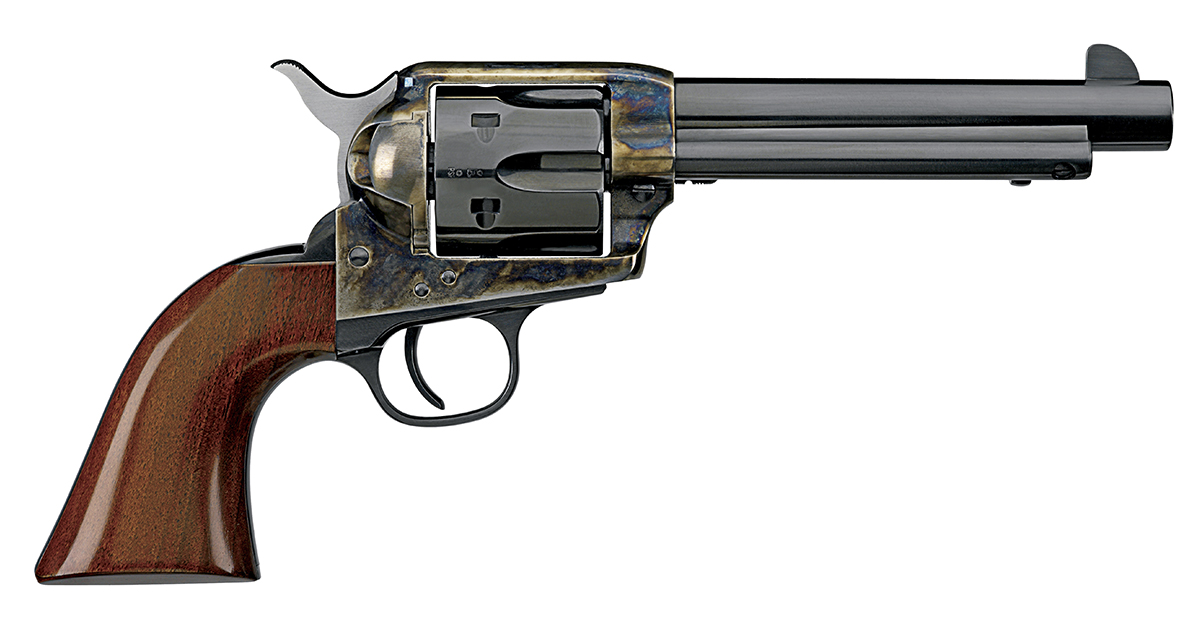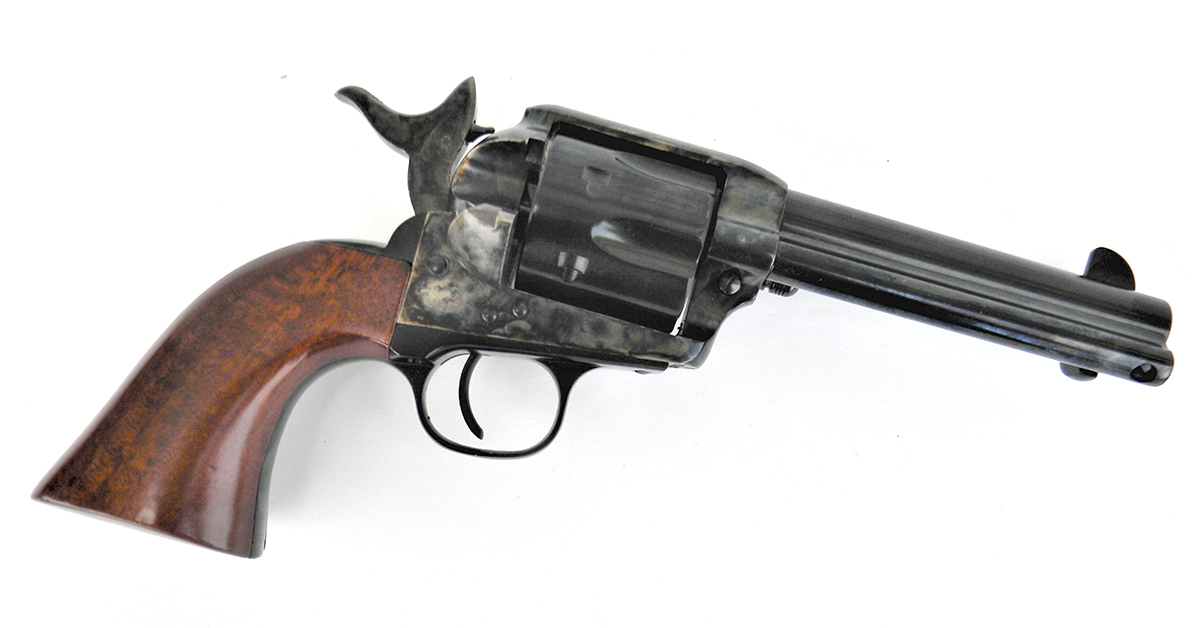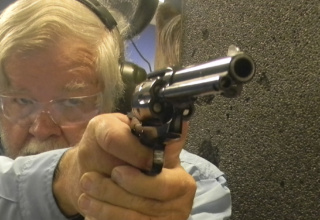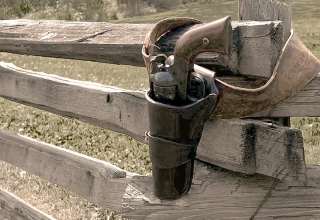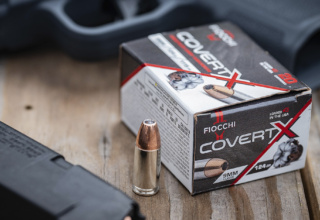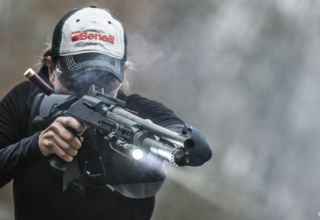You don’t need to wear spurs or don a Resistol to channel your inner cowboy. Our author says strapping on a Taylor’s & Co. Cattleman in .45 chamber will do just fine.
by Bob Campbell
Ever since I saw my first western (western opera) and understood what a cowboy gun was, I wanted one. Later, my research showed that cowboys liked to be called drovers. The men kept notebooks, were well read, and were a far more diverse lot than the cinema shows.
Drovers were a small part of the Old West in totality, and the merchants, ranchers, farmers, and lawmen were another part. They all used what we still call cowboy guns. While there were plenty of other firearms in use, the single-action revolver and lever-action rifle were the firearms usually associated with the Old West in our hearts and minds. Shotguns, single-shot rifles, and double-action revolvers were also common. The original Colt Single Action Army is still in production and very pricey. This revolver survived in use by lawmen well into the 20th century and last drew blood, to the best of my knowledge, during World War II. Frank Hamer, Wyatt Earp, Tom Threepersons, General George S. Patton, General Douglas MacArthur, and Lawrence of Arabia carried the Single Action Army and used it effectively.
The first time I took a bad guy at gunpoint, I was checking a friend’s office while he was out of town and confronted a burglar. He had a long screwdriver in his hand, jimmying the lock. I held him with a Colt Single Action revolver until the police arrived. It was an anachronism, sure, but I did not feel undergunned.
I enjoy firing the single-action revolver and loading and unloading the single-action. If I had to use the piece for real in a gunfight against adversaries armed with modern handguns and able to use them, I don’t think I would last long. But that isn’t why I own the Taylor’s & Company Cattleman. It is a recreational handgun.
Every once in a long while, some old Fudd will pen an article stating that the SAA is a useful handgun for home defense and carry and that it will do what it once did just fine. Not a lot of demand for dropping Indian war ponies these days. Let’s keep an even playing field in personal defense.
The SAA-size handgun is lighter and easier to handle than the Ruger Blackhawk, Super Blackhawk, and Freedom Arms single-action hunting revolvers. It is a fast-handling handgun well-suited to cowboy action shooting and plinking.
Taylor’s & Co. offers several high-quality firearms reminiscent of those commonly in use in the wild west. The Italian-made revolvers are of better steel and more long lasting and accurate than any weapon of the western era. The old guns were good — you didn’t travel the great American desert without reliable firearms. The modern guns are better, and they should be, as these modern revolvers offer well-fitted cylinders, barrel throats, and chambers that maximize accuracy. Old-style revolvers had to be a little loose to maintain function with the build-up of black powder ash. The soft lead bullets loaded in those days and still used in some loads today bumped up and filled the barrel throats, providing good accuracy. This resulted in modern revolvers on the same pattern providing poor accuracy with hard cast bullets and jacketed bullets. Uberti is the maker of this revolver, and they solved the accuracy problem long ago. This handgun is as accurate as any modern revolver. Taylor and Co. imports the rebranded revolver. They call the model illustrated here the Cattleman.
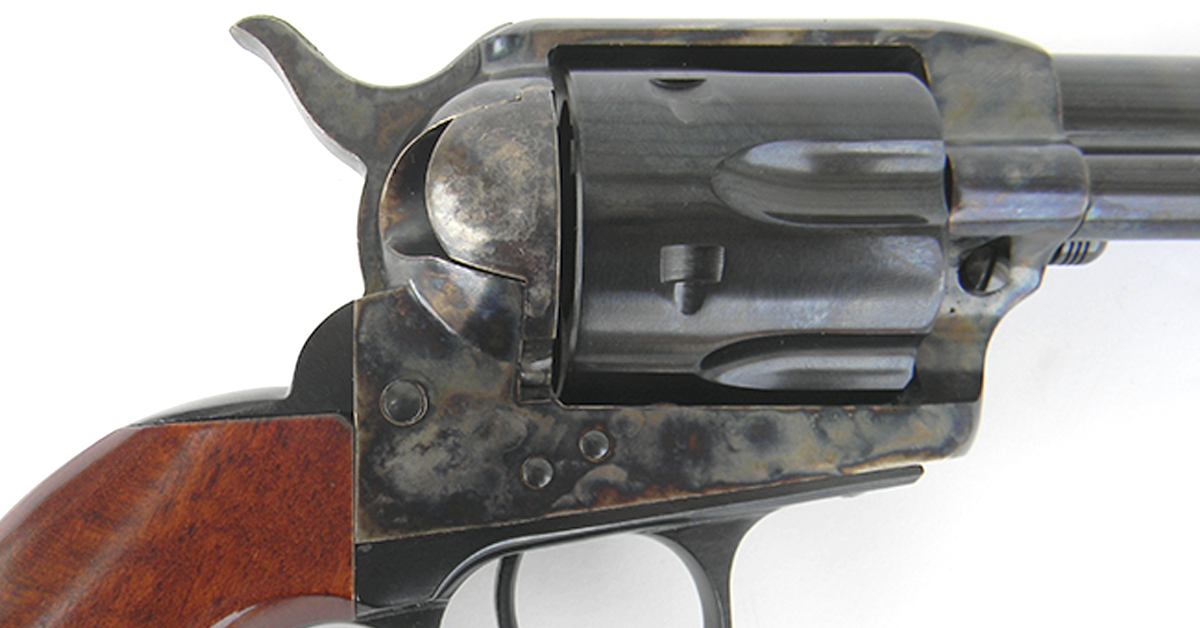
This is a handsome revolver. The receiver is case-hardened in appearance while the barrel cylinder and grip frame are nicely blued steel. I have never warmed up to brass frame grip straps and prefer the strength and looks of the Cattleman. The revolver features period-correct markings and a nicely-fitted hardwood grip. Mine is the 4 ¾-inch barrel version often called the Gunfighter’s Model. While 5.5-inch and 7.5-inch barrel versions are accurate and useful, I like the 4 ¾-inch barrel best for its balance and handling. Interestingly, the cylinder is stamped with the last digits of the Cattleman’s serial number.
To load the SAA revolver, place the hammer on half cock. Open the loading gate and insert one cartridge at a time as you load the revolver. Close the loading gate and raise the hammer to full cock and fully lower the hammer…carefully! Moving the hammer only slightly to the rear and lowering the hammer from half cock is the primary reason single-action revolvers pick up rings around the cylinder — from the bolt dragging. Fully cock the hammer before lowering!
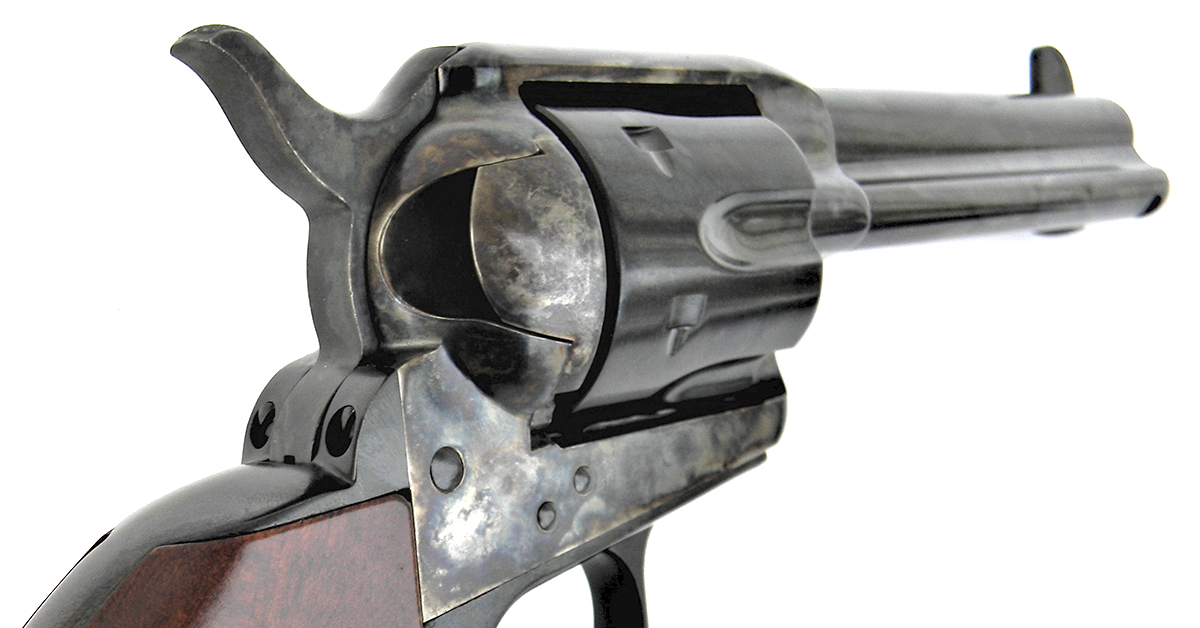
This revolver features a period-correct firing pin set in the hammer. To safely carry the revolver or to have it at ready, the proper sequence is load one cartridge, skip one cylinder, load four, cock, and lower the hammer. This leaves you with an empty chamber under the hammer. Some single-action revolvers are safe for carrying six cartridges. This one is not. Carry five cartridges and one empty chamber. You are not heading to the OK Corral. As you cock the hammer, there are audible clicks as the hand moves the cylinder in line with the hammer. The hammer locks and the bolt stop locks into the cylinder.
The sights are a fixed half-moon front blade and a simple trough-type notch in the frame. The sights are well-regulated to about 15 yards. In rapid fire, quickly sighting on the front sight and placing it just under the X results in dotting the “i” of the target. Not bad for old technology.
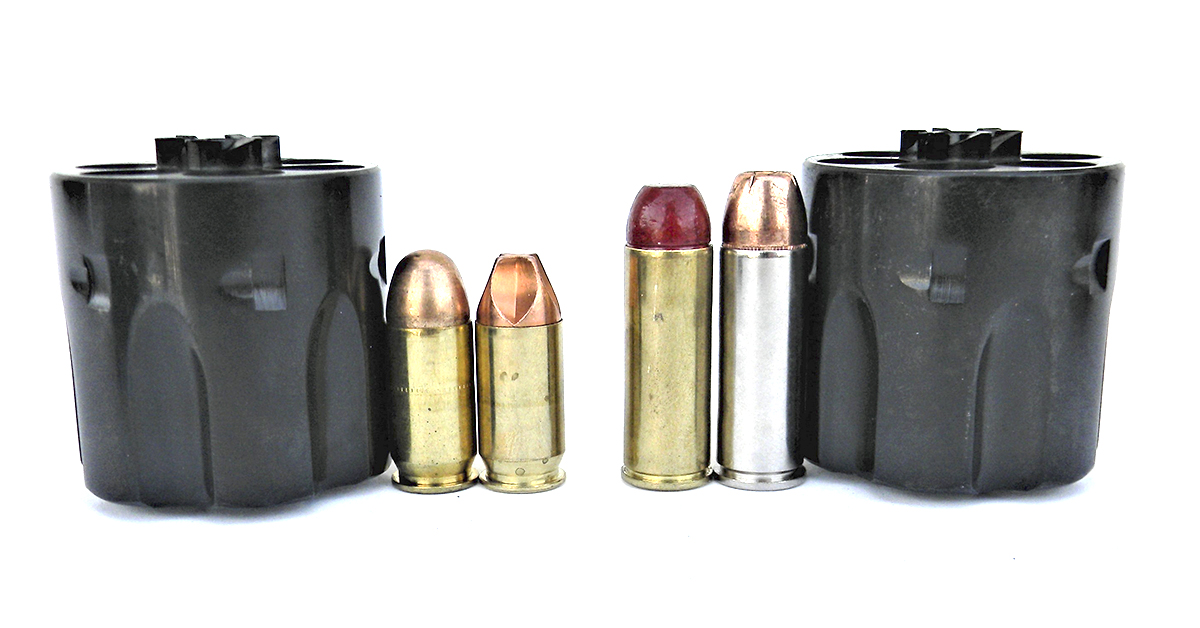
The appeal of this piece over other types is that it is offered with a spare cylinder in .45 ACP. Since barrel dimensions are fine for either .45 Colt or .45 ACP ammunition, this is a neat setup. The .45 ACP headspaces on the case mouth. It doesn’t need a revolver-type ejector rim as the single-action is rod-ejecting. While the .45 ACP isn’t traditional, research indicates that .45 ACP cylinders were available for the SAA as early as 1920.
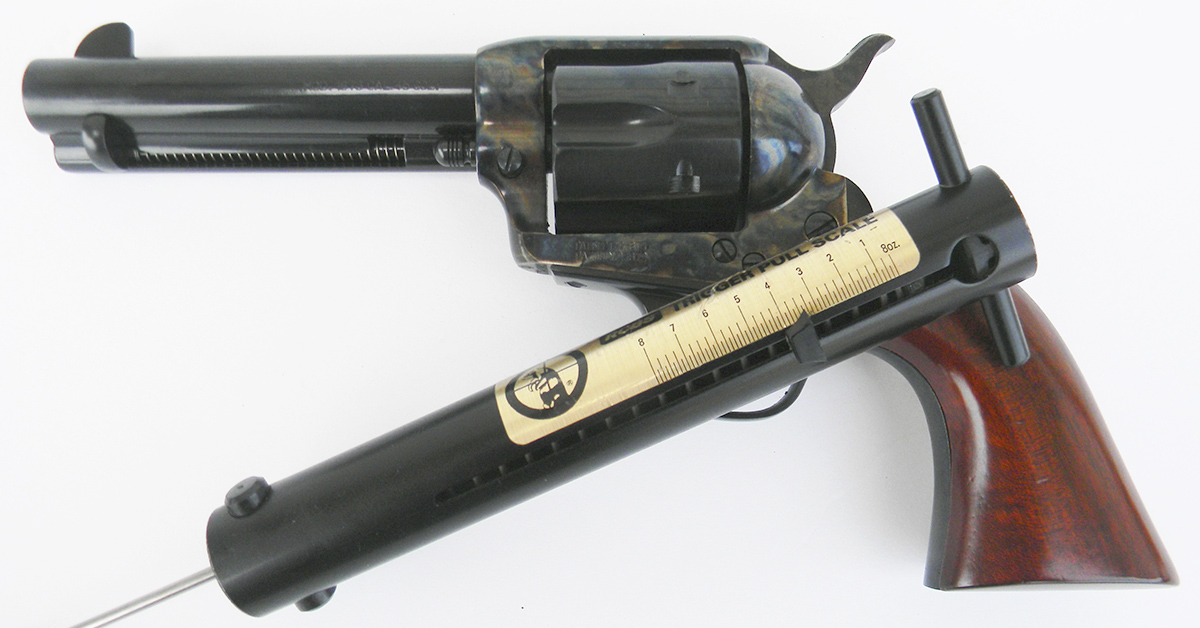
The .45 ACP is less expensive than the .45 Colt revolver cartridge and more readily available. The original .45 Colt was more powerful in standard loadings. Today, most .45 Colt loads are cowboy action loads. A 250-grain lead bullet at 750 fps isn’t a full power .45 Colt by any means, and besides, we are only paper punching. It is nice to have readily available big-bore loads to feed the SAA. If we deign to take the piece camping or hiking — and why not if it feels right? — we may load the .45 Colt cylinder with Buffalo Bore 255-grain loads (although the Buffalo Bore .45 ACP Outdoorsman is no slouch!). In any case, if you like the .45 Colt, you will like the .45 ACP. Firing them is a joy in this fast-handling, light-kicking revolver. Sure, you can load Elmer Keith memorial loads that jolt your wrists, but why? The trigger action on this revolver is superb — a big reason accuracy results were so good. Trigger compression is 3.5 pounds and consistent, measuring the same for five compressions in a row on the RCBS trigger gauge.
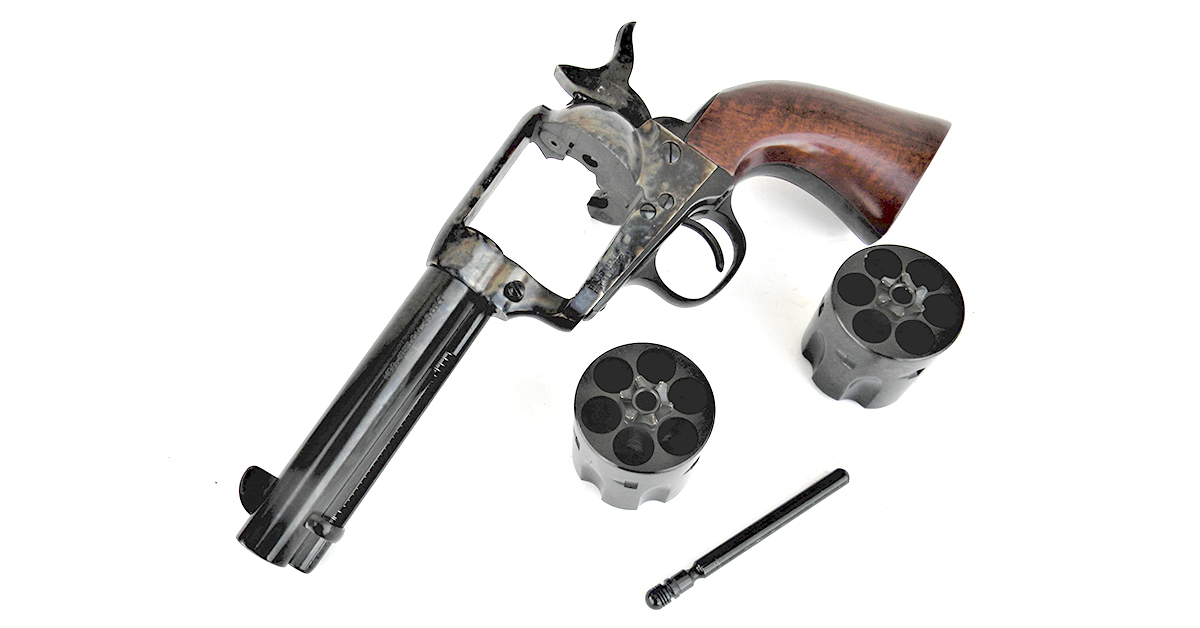
Being as inquisitive as I am, I compared the .45 Colt and .45 ACP while firing the Cattleman. The results are as follows:
.45 ACP load / velocity / 5-shot group @ 25 yds.
- Lehigh Defense 135-gr. / 1190 fps / 2.7 in.
- Hornady 185-gr. Critical Defense / 981 fps / 2.4 in.
- Black Hills Ammunition 230-gr. FMJ / 844 fps / 2.5 in.
- Fiocchi 200-gr. XTP / 990 fps / 1.9 in.
- Fiocchi 230-gr. JHP / 830 fps / 2.5 in.
- Buffalo Bore 255-gr. Outdoorsman /980 fps /1.85 in.
.45 Colt load / velocity / 5-shot group @ 25 yds.
- Hornady 185-gr. Critical Defense / 942 fps / 2.0 in.
- Fiocchi 250-gr. Cowboy / 771 fps / 2.6 in.
- Black Hills 250-gr. FP / 722 fps / 2.45 in.
- HSM 250-gr. XTP / 780 fps / 1.9 in.
- PMC 250-gr. FP / 562 fps / 2.8 in.
- Buffalo Bore 255-gr. / 970 fps / 1.9 in.
If you do have a serious purpose for the SAA revolver, I would think the .45 ACP would perform as well as the .45 Colt up to a point — and only a razor’s edge separates these cartridges. A bobcat or feral dog will never know the difference.
Overall, the revolver handles well and comes on target quickly. I have never regarded the SAA as a handgun well-suited for target shooting but it is for quickly drawing and getting a hit. Bring the revolver up and cock the hammer as you clear your body (don’t cock the hammer until you are well clear of the muzzle).
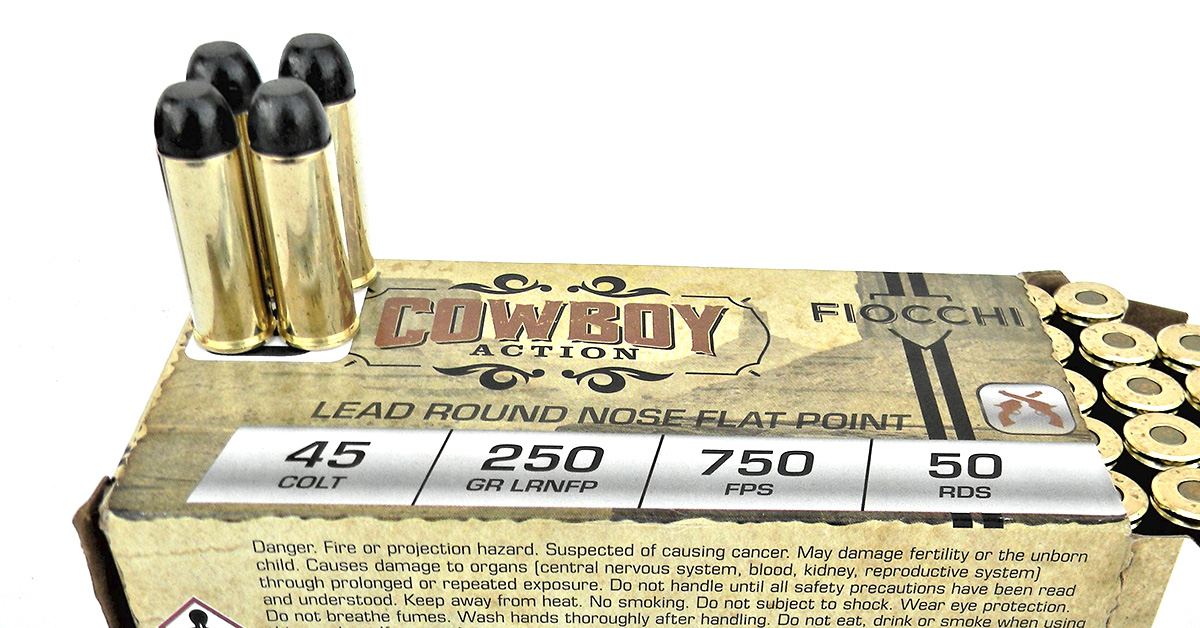
The SAA is a well-balanced handgun, making this type of shooting a lot of fun. The .45 Colt cowboy loads had a little more recoil due to the heavier bullet and energy of the heavier powder charge. With the 230-grain hardball, the .45 ACP is downright pleasant. I fired a good sampling of .45 Colt and .45 ACP loads, but it is more of a struggle and more expensive to find .45 Colt ammunition.
The cylinder isn’t difficult to change. Press the frame-mounted plunger and pull the base rod out and slip the cylinder out. Fit the other in and push the base pin home.
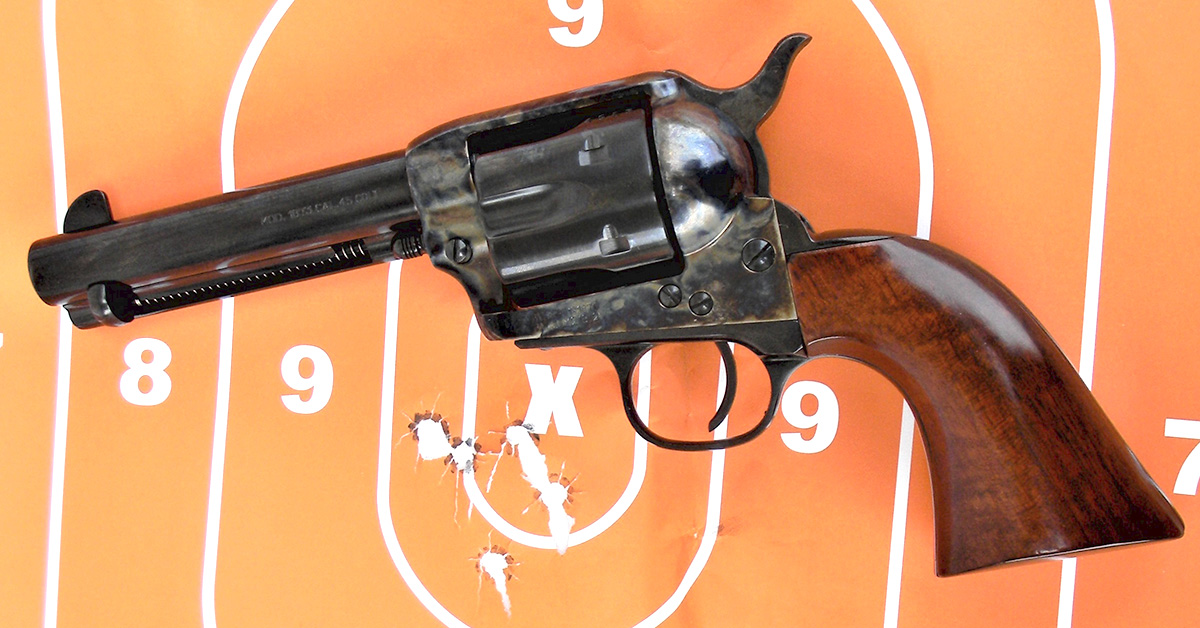
Was one or the other cartridge more accurate? Not really. Each proved consistent. Loads the Cattleman liked went into 2 ½ inches at a long 25 yards for five shots with either caliber.
During the firing tests, I deployed the Cattleman from a DeSantis Doc Holliday holster. It exhibits fine craftsmanship with a good fit and a tiedown thong for secure carry. I like a well-made leather holster, and the Doc Holliday will serve well.
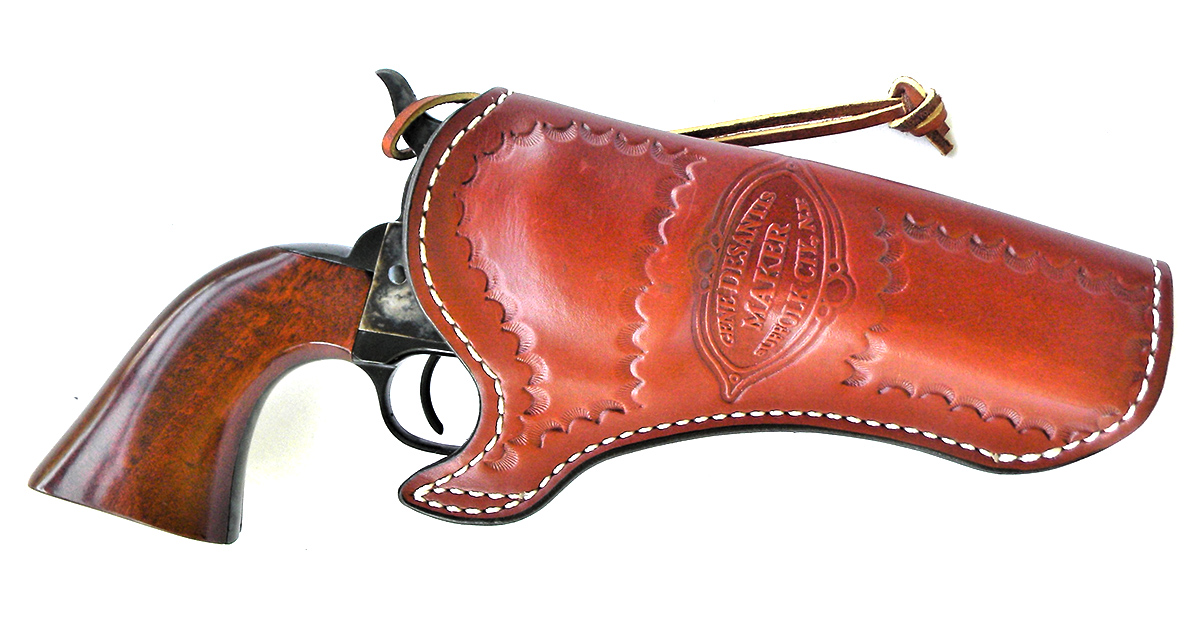
I occasionally carry a SAA when hiking and exploring — it just feels right. Sure, there are more efficient choices, but I have a lot of time in with the breed, and these guns certainly hit hard enough to anchor anything I am likely to run across.
For many shooters, particularly those wishing to burn up more ammunition than I did, the .357 Magnum/9mm convertible would make a great deal of sense. In fact, I believe that .38 Special loads are perhaps the ideal cowboy action cartridge. Still the .32-20 WCF was popular in the west and the .357 certainly beats that hoary old round. Regardless, I simply like the .45s and have a few buckets of brass put up for each. Maybe I need a .357/9mm combination as well.
Time to see if the Social Security check has hit yet.
Taylors & Co. Uberti Cattleman Model 1873 Specifications
- Action: single-action revolver
- Caliber: .45 Colt/.45 ACP
- Finish: blued steel with case-hardened forged frame
- Grip: smooth walnut
- Sights: blade front, notch rear
- Barrel Length: 4.75 in.
- Overall Length: 10.35 in.
- Weight: 2.45 oz.
- Capacity: 6 rounds
- MSRP: $752.57

